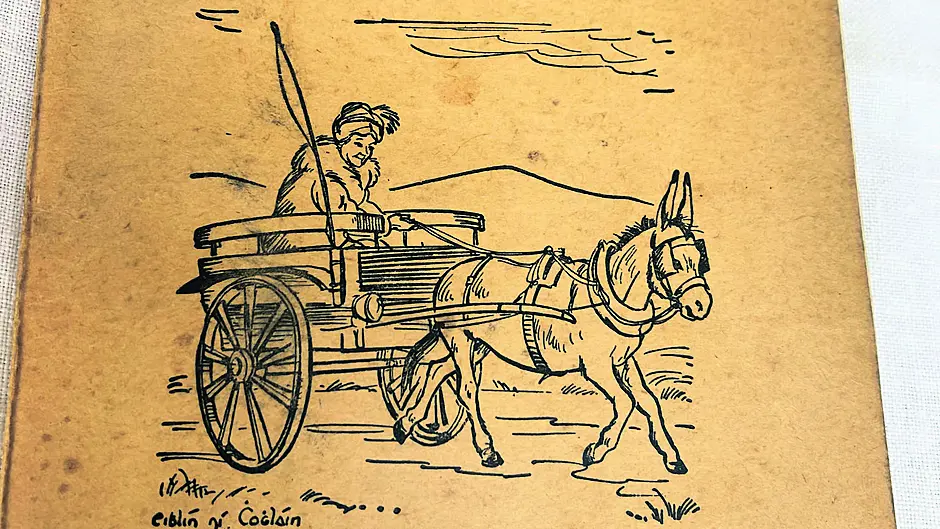A late night radio discussion on the Travelling community prompted Peadar King to go in search of a book from his past.
GROWING up in Clonakilty was a largely positive experience, a young member of the Travelling community once told me, although ‘some people still have that thing, they think we’re bad people.’
Recently, I was reminded of that stark statement while driving through Clonakilty late at night. Colm Ó Mongáin’s distinctive voice came over the airways. ‘Why are Travellers in southwest Dublin six times more likely to take their own lives than their settled neighbours?’ Ó Mongáin asked. ‘Racism – says a new report.’
It was a blunt introduction. And a blunt answer. Stark and unforgiving. Unforgiving of the settled community, of whom I am one, and our collective attitude towards members of the Travelling community.
And out of the depths of memory came a story prompted by Ó Mongáin’s interview. A story that was a staple of national school education for a whole generation of people (me included) now in their sixties and seventies. Nedín. A story written from the perspective of a donkey by Máirtín Ó Corrbuí (1912–2002).
‘Mise Nedín’, it begins. ‘Is asal mé.’ My name is Nedín. I am a donkey.
Tracking down a copy of Nedín proved more difficult than I had imagined. I approached the ever-helpful local library staff. No copy was available in any of the Cork libraries. One copy, it transpired, was available in a library in Leitrim. But it must have been consigned to the darkest recesses of its archive. For good reason. A long wait ensued but it never materialised. Next stop was Liam Ághas, a teacher of Irish from my secondary school days. A real scholar and a lover of books. Just 15 minutes after I contacted him, he called back to say he had a specimen or pre-publication copy belonging to his father-in-law Máirtín Ó Seasnáin (1903-1983), he too once an Irish language scholar.
Published by Comhlacht Oideachais na hÉireann, it had the imprimatur of the educational establishment of the time. Interestingly, his was an undated copy written in cló Rómhánach (Roman script) as opposed to cló Gaelach (old Irish script) so it must have been published in the early 1960s.
His is a story told in book fashion. Rugadh mé tuairim is feiche bliain ó shin. I was born about twenty years ago. His was once a good life. Bhí máistir maith macánta agam... go leor le nithe... agus aire le fáil agam. I had a kind master... enough to eat... and someone to look after me.
That was until... disaster, tubaiste, struck. Oiche dhorcha gheimhridh a bhí ann. It was a dark winter’s night. A stranger entered his stable. Bithiúnach ard, salach, gioblach ba ea é. A tall dirty ragged scoundrel. Tincéir. A tinker. Cladhaire smeartha. A dirty blackguard.
A litany of thievery and abuse followed.
Théadh na tincéirí isteach sna páirceanna nuair a thagadh an dorchadas, agus sciobaidis oiread féir is d’fhéadfaidis a iompar. Under the cover of darkness, the tinkers went into fields and stole as much hay as they could carry.
Animal cruelty: Céad mallacht, bhí mé briste bruíte, lag, cnámhach agus salach. Subjected to one 100 curses, I was broken and bruised, weak, stiff-boned and dirty.
And child neglect. Páistí ocracha agus cosnocht. Children hungry and barefoot.
Ó Corrbuí doesn’t let up. Merciless vilification. Echoing the racist depiction of the Irish in the caricatures that featured in the 19th century English Punch magazine.
Bhí ceann mór rua air agus scrogall caol fada. Bhí faghairt ina shúile beaga. Bhí cluasa air mar bheadh dhá líobar éadaigh ar sileadh leis, agus srón mór go mba léir uirthi gur minic a briseadh í. Bhí béal cam air agus cúpla fiacal fada buí ina dhrandal...
He had a large redhead and a narrow long neck. There was a fire in his eyes.
He had ears that looked for all the world like two tails of cloth tied to him; a big nose that was often broken. He had a crooked mouth and a couple of long yellow teeth hanging out of his gum.
Cumulative caricatures that leave a legacy.
Nedín never made it to West Cork.
Chonaic mé machairí méithe na Mumhan ó Luimneach go Caiseal, cósta Chiarraí agus an Chláir, ó thuaidh go Tiobraid Árann, agus siar thar Sionainn...
I saw the fertile planes of Munster, from Limerick to Cashel, the coast of Kerry and Clare, then I went north to Tipperary and west beyond the Shannon ....
Perhaps it is easy to assume then that West Cork was a place apart. Yes, growing up in Clonakilty is largely a positive experience for young Travellers. But given racism’s insidious way of inserting itself into our consciousness and subconsciousness, none of us is inured to its presence in our lives. While Cork may be a place apart in terms of its physical beauty, in other respects it is not a place of exception.









